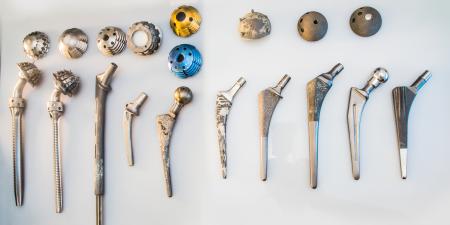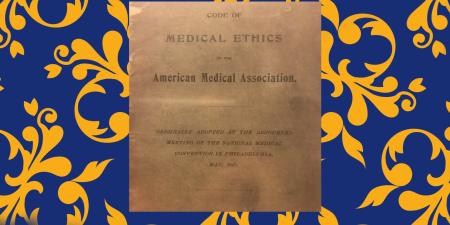Abstract
The number of new medical devices cleared by the US Food and Drug Administration (FDA) through the 510(k) pathway that has subsequently been associated with safety risks has led to discussion of approaches to regulation and communication of device risks. As debate continues over whether the pathway needs to be altered, features of ethical use of 510(k)-cleared devices can include (1) heightened caution with respect to newly cleared 510(k) products until adequate data are gathered through postmarket surveillance, (2) facilitating informed consent by improving physician and patient knowledge of the 510(k) pathway, and (3) basing distribution of these devices on individual risk assessments while ensuring equitable access.
Case
A hospital purchasing committee is considering contracting with a company that produces an artificial lumbar spinal disc. The literature cited within the disc manufacturer’s proposal claims that, compared to lumbar fusion, the benefits of the disc include earlier hospital discharge, a quicker return to work, and fewer opioids to manage postoperative pain. Several members of the committee, however, raise the concern that the disc could collapse and migrate, which would require further surgeries.
The US Food and Drug Administration (FDA) cleared the disc via the 510(k) pathway, which does not require clinical testing data. Instead, clearance is based on “substantial equivalence” to a predicate device on the assumption that the benefit-risk profile of the new device will be similar to the predicate device’s profile. A new device is substantially equivalent to the predicate device if the new device has the same intended use as the predicate device and either (1) has the same technological characteristics as the predicate or (2) has different technological characteristics but does not raise different questions of safety and effectiveness and the information submitted for clearance demonstrates comparable safety and effectiveness.1
Several members of the committee disagree about whether the 510(k) process provides sufficient assurance of device effectiveness and safety and, on that basis, disagree about entering into a purchasing contract with the device manufacturer. It should be noted, however, that in the presentation of the hypothetical case, no information is provided on the predicate or differences between the predicate and the current product (although it might be reasonable for the committee to seek out that information before making its decision).
Commentary
This case raises several practical and ethical questions about 510(k)-cleared devices, including how clinicians and organizations should weigh the benefits and risks of 510(k)-cleared devices, how patient safety should be optimized, what constitutes adequate informed consent for implantation, and how devices should be disseminated.
Benefit-Risk Analysis
A 2018 study found that physicians rated the following factors most highly when choosing whether to use implantable devices: better outcomes for patients, the longevity of the implant, design and ease of both implant and instrumentation, scientific evidence of better outcomes, length of follow-up in scientific studies, and product reputation.2 When new implantable devices are cleared by the FDA via the 510(k) pathway, it therefore raises a particular challenge to physicians and hospital purchasing committees, since many of these factors might be unknown.
Although the 510(k) clearance process is an important mechanism for allowing incremental changes to devices, safety issues related to 510(k) clearance have been identified in some systematic assessments of the device market. A study in JAMA Internal Medicine found that, of all the devices recalled from 2005 to 2009 because of serious risks, 78% were approved through the 510(k) regulatory process or were exempt from regulatory review.3 The nature of 510(k) clearance—which can be issued on the basis of a finding of substantial equivalence to another approved or cleared device—leads to uncertainty in any assessment of patient safety for 510(k)-cleared devices because complicating factors abound. For example, some 510(k)-cleared devices rely on the use of more than one predicate by combining functions of different predicate devices (called multiple predicates) or by relying on one predicate to support equivalence of intended use and another to support equivalence of technological characteristics (called split predicates). These complexities have reportedly made the device safety profiles less certain.4 Additionally, manufacturers can use as a predicate a device that was cleared because it was substantially equivalent to another device, which might have been substantially equivalent to yet another device, and so on, which has been called predicate creep. In such cases, there might be substantial differences between a new device under consideration and whichever product in the predicate chain was the last product that was formally assessed in clinical trials of device effectiveness or safety.5 Finally, manufacturers are permitted to use devices that have since been recalled as a predicate, raising safety concerns about newly cleared devices.6
Optimizing Patient Safety
Clinical decision making must account for the fact that relevant safety information and other factors important for patient decision making are unknown. One approach to addressing this dilemma would be for hospitals to avoid bulk purchasing of 510(k) medical devices that lack key clinical data at the time they reach the market. Instead, purchasing committees could make these decisions on a case-by-case basis for patients whose physicians can justify the benefit of the incremental changes offered by these devices. This precaution is especially important when major potential risks loom with the device—for example, with the artificial lumbar spinal disc in question, the risk of subsequent surgeries may negate any potential benefits, as subsequent surgeries would mean more time in the hospital, more time away from work, and possibly more opioids for the management of postoperative pain over the long term. While hospitals might incur greater costs by not purchasing the devices in bulk, purchasing on a case-by-case basis can help avoid secondary costs—such as the use of hospital beds for additional procedures—if the device turns out to lead to worse outcomes for patients. When organizations do purchase on a case-by-case basis, physicians should understand the nature of the clinical testing (if any) used to bring a device to market and be able to clearly pass that information along to patients.
The fact that some risks and benefits of a device might be initially unknown is itself a risk.
Updating the information available to prescribers and hospital formulary committees is also necessary and involves collecting post-clearance data efficiently on new 510(k) devices so that regulators can better understand when safety warnings need to be updated or, in a worst-case scenario, when devices need to be withdrawn from the market. Although the FDA requires manufacturers and hospitals to report serious device-related injuries, underreporting of these adverse events is widely recognized.7 Underreporting might be due to ambiguities in whether an injury was related to the device (or other etiologies).8
In addition to device adverse event reporting systems—the primary one being the FDA’s Manufacturer and User Facility Device Experience Database—creation of national registries for devices can promote more systematic oversight by enabling more rigorous evaluation of the real-world evidence of the benefits and risks of 510(k) devices. The European Union is in the process of creating a database across member countries to aid in device safety and effectiveness surveillance.9 To establish and maintain useful registries requires funds, although costs can be manageable; indeed, some well-regarded registries have been established by nonprofit institutions, including professional societies like the American College of Cardiology.10 However, if private registries are found to increase the price of devices and impede equitable access, public funding through a small tax on each device can be considered. Building registries for 510(k)-cleared devices should give hospital purchasing committees more confidence when considering purchasing these devices in bulk.
Informed Consent
Patients should also be better educated about the advantages and disadvantages of 510(k)-cleared devices. Adequate informed consent requires that patients have a full understanding of the known risks and benefits of both the device in question and alternatives. However, since many of these risks and benefits might be unknown initially, patients’ comprehension of the limitations of 510(k) clearance would help them make an informed decision among treatment options. The fact that some risks and benefits of the device might be initially unknown is a risk in and of itself, one that patients themselves must be fully informed of and willing to incur. In particular, patients must understand that collection of safety data may be ongoing. Unless clinicians explain that evidence of the cleared device’s safety and effectiveness is lacking, patients cannot make an accurate assessment of the benefits and risks of the proposed device vis-á-vis alternatives. Failure to do so could thus undermine collaborative decision making, leaving a crucial part of the decision solely in the clinician’s hands. Clinicians should engage in shared decision making to understand the patient’s personal risk tolerance and ability to comprehend the implications of what is and is not known about the device’s effectiveness and safety—to do otherwise and make a decision based on what they believe is in the patient’s best interest would disrespect the patient’s autonomy.
Distribution of 510(k) Devices
As with the introduction of other new technologies, there is a need to ensure that 510(k)-cleared devices are used in accordance with the ethical principle of justice. Here, a tension arises. On one hand, there is a need to ensure that these devices are disseminated equitably to patients even in rural hospitals or resource-poor settings. On the other hand, given the uncertain safety profile of these devices, there is a need to ensure that these devices will not be used disproportionately in potentially vulnerable patient populations—such as patients of color—without adequate informed consent.
Ensuring that all patients have equitable access to new devices should not come at the expense of the principles of beneficence and nonmaleficence. Clinicians need to assess individual risk profiles for these devices, which involves careful assessment of whether the patient will benefit more from this device than other well-established devices and of any circumstances that might increase the patient’s risk of harm from using the device. Such assessments are particularly important in order to avoid undue burden or harm to members of vulnerable patient populations. For example, caution should be taken in implanting 510(k)-cleared devices in patients who might not have access to affordable health care if a serious adverse event occurs.
Conclusion
The process of 510(k) clearance for devices raises multiple questions about benefit-risk analysis, optimizing patient safety, clinical decision making, and distribution of 510(k)-cleared devices. Policymakers are currently debating whether the 510(k) process needs to be updated or even replaced. For example, safety issues led a national expert panel to recommend the elimination and replacement of the 510(k) clearance pathway in 2011.4 The panel concluded that a device’s substantial equivalence to a predicate device did not ensure a similar benefit-risk profile and that this pathway also did not encourage meaningful innovation. Without any assurance of either safety or innovation, the panel believed that 510(k) clearance did not advance the FDA’s mission of protecting public health.4
While that debate continues, physicians and patients need better guidance about decision making related to currently available 510(k)-cleared devices. In this case, the hospital purchasing committee should avoid bulk purchasing of the device in question and encourage clinicians to discuss relevant information about 510(k) clearance with patients who might benefit from the device. In the future, when questions remain about the use of these devices in patients, clinicians and health care organizations should ensure that uncertainties are discussed with patients, restrict financial relationships that could cause conflicts of interest, and follow patients closely after the device is implanted to help inform the FDA about the safety of the device, if or when issues arise.
References
-
Premarket notification 510(k). US Food and Drug Administration. Reviewed March 13, 2020. Accessed August 25, 2020. https://www.fda.gov/medical-devices/premarket-submissions/premarket-notification-510k
-
Burns LR, Housman MG, Booth RE, Koenig AM. Physician preference items: what factors matter to surgeons? Does the vendor matter? Med Devices (Auckl). 2018;11:39-49.
- Zuckerman DM, Brown P, Nissen SE. Medical device recalls and the FDA approval process. Arch Intern Med. 2011;171(11):1006-1011.
-
Institute of Medicine. Medical Devices and the Public’s Health: The FDA 510(k) Clearance Process at 35 Years. National Academies Press; 2011.
-
Hines JZ, Lurie P, Yu E, Wolfe S. Left to their own devices: breakdowns in United States medical device premarket review. PLoS Med. 2010;7(7):e1000280.
- Zuckerman D, Brown P, Das A. Lack of publicly available scientific evidence on the safety and effectiveness of implanted medical devices. JAMA Intern Med. 2014;174(11):1781-1787.
- Resnic FS, Normand SLT. Postmarketing surveillance of medical devices—filling in the gaps. N Engl J Med. 2012;366(10):875-877.
-
US General Accounting Office. Medical device reporting: improvements needed in FDA’s system for monitoring problems with approved devices. GAO/HEHS-97-21. January 29, 1997. Accessed October 15, 2020. https://www.gao.gov/assets/230/223583.pdf
- Medical devices—EUDAMED: overview. European Commission. Accessed February 16, 2021. https://ec.europa.eu/health/md_eudamed/overview_en.
-
NCDR. American College of Cardiology Quality Improvement for Institutions. Accessed April 6, 2021. https://cvquality.acc.org/NCDR-Home/about-ncdr



